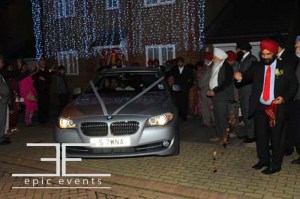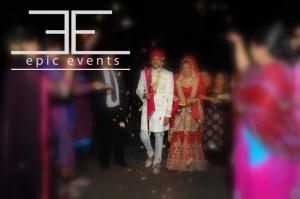The Punjab is home to many faiths. So, a Punjabi marriage ceremony could take place in any number of religious or civil venues. This guide will take you through a Sikh marriage.
In the previous post, we went through the traditional customs conducted at the bride and grooms homes in the morning of the wedding day. Now, families from both sides will meet at the gurdwara (temple).
Milni and reception of barat
The barat (groom’s family) is received at the gurdwara by the bride’s family. At this point, the bride is kept separate until the main ceremony, to keep up the anticipation to see her.
 Both families will congregate in a large area, usually outside the gurdwara for the milni (meeting). Before the actual milni begins, an ardaas (prayer) is carried out, which is auspicious to begin any happy occasion. The milni is a formal introduction of key relatives from each family.
Both families will congregate in a large area, usually outside the gurdwara for the milni (meeting). Before the actual milni begins, an ardaas (prayer) is carried out, which is auspicious to begin any happy occasion. The milni is a formal introduction of key relatives from each family.
The milni, or meeting, involves the priest to call the names of corresponding relations from each side, beginning with the eldest, which are the bride and groom’s grandfathers. They meet in the middle of the surrounding congregation, put a haar (garland) on each other, hug and pose for a photo! It’s become commonplace for each side to compete by trying to pick each other up when they hug as a playful gesture.
Then the barat are invited inside the gurdwara for breakfast. However, the bride’s sisters take this opportunity to tease their soon-to-be brother-in-law. The groom or his father have to try to put money (it could be as little as a penny!) into a glass of water held by the bride’s sisters. But they will resist and aim to get as much money as possible. They also tend to hold up a red ribbon, which the groom will cut to enter. As soon as money is placed in the glass, the bride’s family have to let the groom in. This is a relatively new custom that has been adopted.
Checklist
- Garlands (for the milni)
- Gifts – which the bride’s family bring to give to each relative who does a milni
- Barfi (Indian sweets) – which is fed to the groom as he enters the gurdwara
- Glass of water – for the bride’s sisters
- Red ribbon and scissors
Anand Karaj (blissful union)
The Sikh marriage ceremony is the anand karaj, or blissful union. This takes place in the gurdwara darbar (main room). Relatives from both sides will pay their respects to the Guru Granth Sahib (holy book) and take a seat in the darbar.
The boy will come in with a ramalla, which he offers to the Guru Granth Sahib as he bows 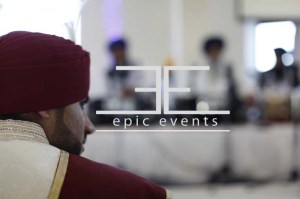 down to pay respect. He then takes a seat with his sarwalla (best man) and close family. At this time, priests are reading shabd (hymns).
down to pay respect. He then takes a seat with his sarwalla (best man) and close family. At this time, priests are reading shabd (hymns).
The bride’s sister will remove the kalgi (turban pin) and/or sehra, if he is wearing it. They will also remove the whole coconut that was placed in his palla that morning, and give this to the bride’s mother.
Just before the bride is brought into the darbar, the groom is told to sit in front of the Guru Granth Sahib. When the bride comes in, she is escorted by her brothers, which is symbolic because brothers are considered protectors in the Indian culture.
She will also offer a ramalla, bow down and sit next to the boy. Her close relatives, such as her sisters and sister-in-laws will set behind her for support. Likewise, the groom’s sisters or other close relatives will sit near him for support.
 The bride’s father is prompted to do the kanyadaan, or palla rasam, which is symbolic of the father giving his daughter away. He will tie the palla, which the groom is wearing (as discussed in the previous post), to the bride’s wrist or she will hold it.
The bride’s father is prompted to do the kanyadaan, or palla rasam, which is symbolic of the father giving his daughter away. He will tie the palla, which the groom is wearing (as discussed in the previous post), to the bride’s wrist or she will hold it.
Traditionally, the bride’s brothers will then stand around the altar for the laavan (marriage hymns). Four laavan are conducted, which take the bride and groom through the stages of the journey that lead to a union with God and union of a husband and wife. These are both teachings and vows that they take to seal their marriage union.
The gyaani will recite a hymn for each laav, after which the bride and groom will bow down, and start walking around the altar (where the Guru Granth Sahib is) with the groom leading. The palla is linking them both and as they take a journey around the altar, the bride’s brothers take it in turns to hold her and guide her around. This is symbolic of brothers being protectors but also practical to prevent a nervous bride from fainting.
Laavan
The meaning behind each laav could be summarised as follows (however, some translation is down to interpretation so this is an estimated interpretation):
- First laav emphasises duty to the family and the community
- Second laav signifies the stage of yearning and love for each other
- Third laav stresses the stage of detachment from the world
- Fourth laav signifies the final stage of harmony and union in marriage when love between the couple blends into the love for God
 The groom leading does not imply he is in control or any superior. Him leading is to symbolise his role as the carer and provider of his wife. Also, the bride and groom are equally distant from the Guru Granth Sahib this way by taking circular journeys around the altar.
The groom leading does not imply he is in control or any superior. Him leading is to symbolise his role as the carer and provider of his wife. Also, the bride and groom are equally distant from the Guru Granth Sahib this way by taking circular journeys around the altar.
After the bride and groom complete each laav, they take a seat and the gyaani recites the next hymn for the corresponding laav. After the fourth laav, a hymn is sung to mark the marital union. A final ardaas is performed by the gyaani with the entire congregation including the wedding couple.
This concludes the Sikh marriage.
This is the end of the formal wedding customs. The groom’s parents will then put a haar around the couple, give them money for blessing and feed them barfi. The bride’s parents will follow suit and place the whole coconut back in the groom’s palla. The rest of the congregation will take it in turn to give them sagan (money as blessing). Although, this is now usually done in the reception rather than the gurdwara.
Checklist
- Ramalla – one for the bride and another for the groom
- Barfi
Now that the couple are married, it’s party time! Find out what the next part of a Punjabi marriage involves with the Guide to Punjabi Weddings.



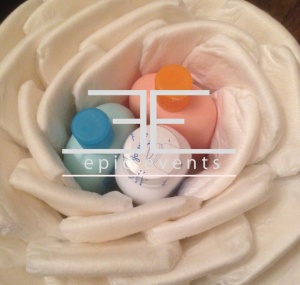
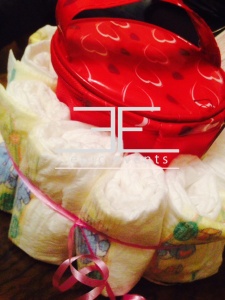

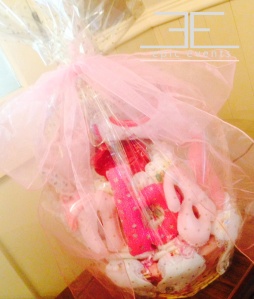
 e plentiful and relatively cheap so houses are often adorned with marigolds and carnations that also give a fresh scent in the festive home.
e plentiful and relatively cheap so houses are often adorned with marigolds and carnations that also give a fresh scent in the festive home.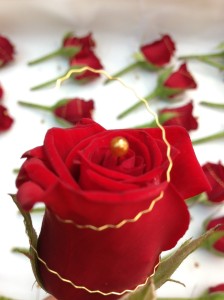





 But in the modern world, parties are the rage. The bigger, bolder and grander; the better – or so is the perception of many families. Some wedding couples opt for unique features to their reception, such as dance groups or musicians, children’s entertainment (such as jumping castles, caricature artists, clowns).
But in the modern world, parties are the rage. The bigger, bolder and grander; the better – or so is the perception of many families. Some wedding couples opt for unique features to their reception, such as dance groups or musicians, children’s entertainment (such as jumping castles, caricature artists, clowns). Contact us
Contact us
